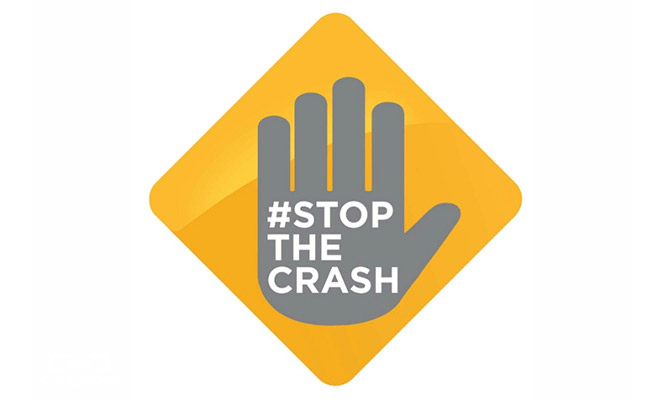




The New Car Assessment Programme (NCAP) has become the epicentre for major headaches for international and domestic car manufacturers around the globe. While the NCAP has no doubt helped in putting into place stringent car safety parameters as well as ensure strict compliance by manufacturers, but the parameters for NCAP tests vary with change in purchasing power of the people in a given market. This raises an important question for governments in developing and underdeveloped economies i.e ‘Do people need to buy cars with compromised safety?’.
NCAP or New Car Assessment Program (or Programme) is a government-run car safety program for evaluating. It has been put in place to test and evaluate new automobile designs against various safety threats. Here a few important facts about the NCAP.
The first NCAP was created in 1979 in the United States.
The NCAP Test was designed by the United States National Highway Traffic Safety Administration.
The Euro NCAP was founded in 1997 and backed by the European Union.
Other Similar test programs include:
Australia and New Zealand with ANCAP.
Latin America with Latin NCAP.
China with C-NCAP
Bharat New Vehicle Safety Assessment Program (India) is set to go into effect in 2020.
The Test Routine
Step 1: Getting Cars
NCAP tests the most popular variant of a given car. These cars are either sponsored by respective manufacturers or procured from anonymous dealers. Euro NCAP may also randomly chose cars from respective manufacturing plants.
Step 2: Number of Cars Tested
For a given variant, the number of cars tested by NCAP depends on the geography and economy of the region. A complete Euro NCAP test requires 4 car units of a given variant. These units are collected from different dealerships for diverse testing.
Step 3: Manufacturer Confirmation
Once the test units are collected, the NCAP body shares particular vehicle identification numbers(VIN)with the manufacturer for confirmation of specs and features. VINs may also be selected randomly from a list provided by the manufacturer. Once verified the cars are laboratory tested for confirming the units are equipped with each and every type of safety equipment listed in the specifications by the manufacturer.

Read Also - Finally The Slovak Plant Inaugurated by Jaguar
The NCAP will not test any vehicle/car which is not type approved or not from series production or not legally sellable to the general public. Any doubt over the production status of the vehicles is reported and investigated.
Step 4: The Tests
NCAP rating system varies as per the region of operation. The rating system parameters are not universal and test norms vary based on the average spending power in a given region. This may sound or seem dubious but NCAP says that the prime objective behind the test is not to bully car manufacturers but to get customers the safest possible car from the options at their disposal.
Euro NCAP follows the strictest test norms. 5-star rating in these tests would be nothing less than an Olympic Gold for Indian Car Models. The test stages include the frontal offset, full frontal, side barrier, and side pole crash tests, along with the whiplash and pedestrian safety tests. Passive features like autonomous/radar-based safety technologies are also tested. There are 4 test mills on which the tests are conducted.
Read Also - Next-Gen Toyota Camry Spotted in India
Similarly, tests vary in difficulty levels and numbers across other NCAP regions like NCAP (Japan), KNCAP (Korea), ANCAP (Australasia), Latin NCAP (Latin America), CNCAP (China), and US NCAP (USA).As discussed earlier, ASEAN NCAP perform frontal offset and side-impact crash tests and require two cars instead of the four used in Euro NCAP tests. Hence, Global NCAP results on Tata Nexon, Maruti Vitara Brezza, Maruti Swift and Renault Kwid showed results of frontal offset crash only. Further, only one car from each maker was tested during the evaluation
India-spec Maruti Suzuki Swift Global NCAP rating stood at 2 Star drawing big questions from customers and market at large.
Following zero star rating on NCAP Report Card, Volkswagen India discontinued and pulled off a non-airbag variant of the Polo from the sale.
Read Also - Test mules of Compass Variants Spotted on Jaipur Roads
Applying a one size fits all form for NCAP is particularly unviable in developing economies like India where consumer purchasing power is not as high as in Europe, Japan, Australia or America. Sophisticated safety technology is costly and can shoot car prices beyond the reach of the Indian common man. Hence, car manufacturers comply with the standard safety norms and regulations set up by the State. However, NCAP makes sure that buyers are regularly educated about global safety standards. The awareness itself can be a catalyst in driving consumer behavior and need for a more safer option. Although NCAP tests are not mandatory for a car it is known slowly accepted standard across the globe. The data insights and visual support for all tests give car buyers a much-needed understanding about their as well as their families safety in the car.